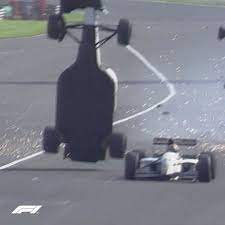I am looking into F1 car aerodynamics for a course that I am taking. I understand that because of Bernoulli's law, when the velocity increases, the pressure decreases, which is good for F1 cars if we want to generate downforce (by having a low pressure below the car).
However, the diffuser is described with
As the diffuser opens up the airflow accelerates further (source, but I can link many other sources.).
Which I do not get because due to conservation of mass, I would expect the velocity to go down, when a duct expands. The only time where I would expect an increase in velocity when expanding is when we have supersonic flow, but in an F1 car, we are way below that. I also looked at other diffuser designs and they all seem to really open up.
So, what am I missing?
Thanks!


